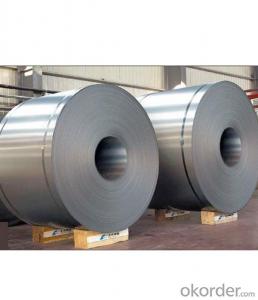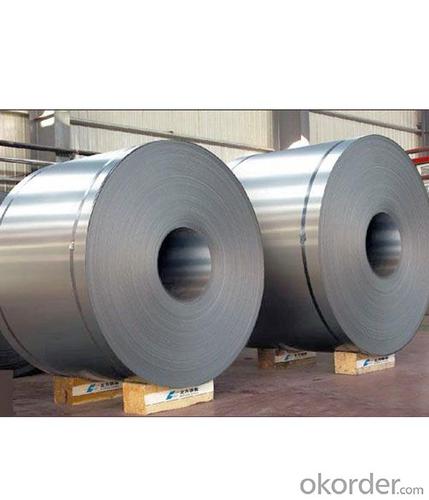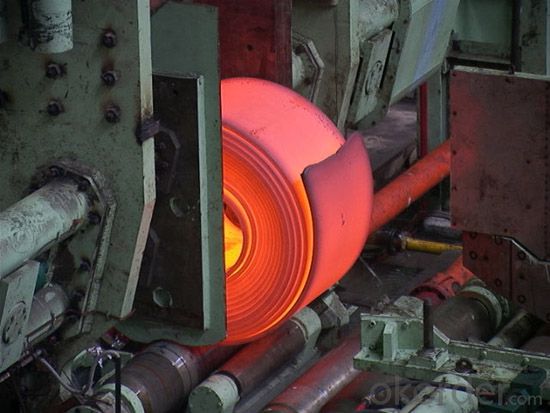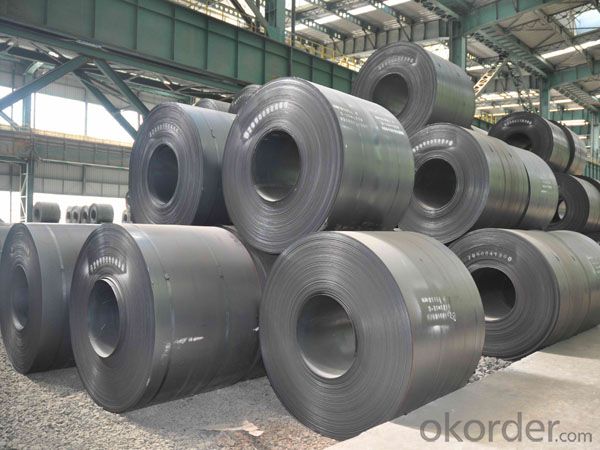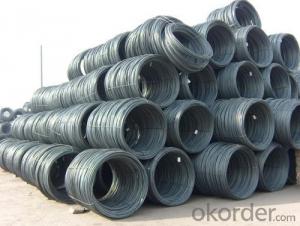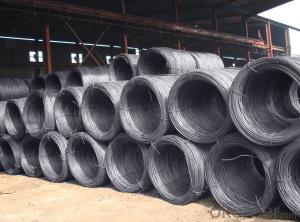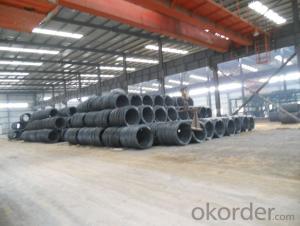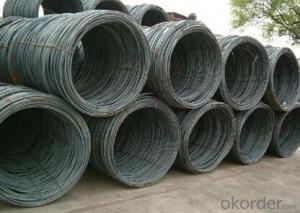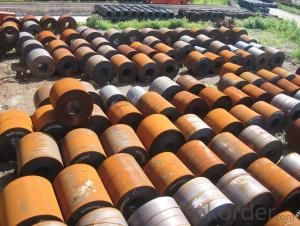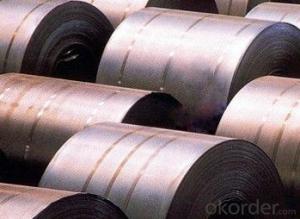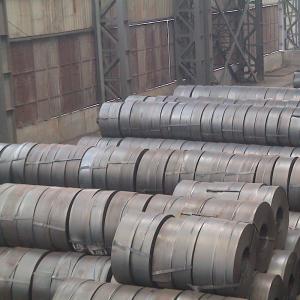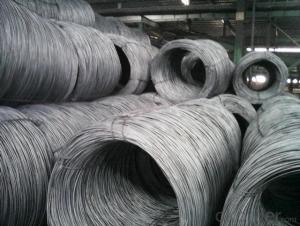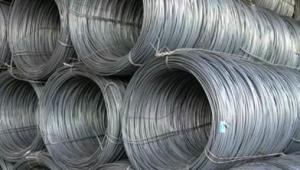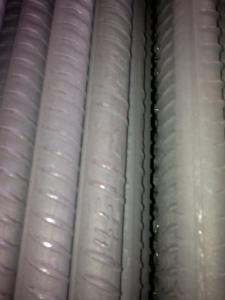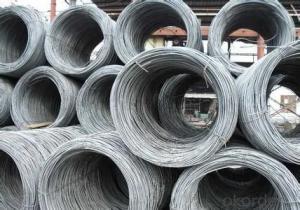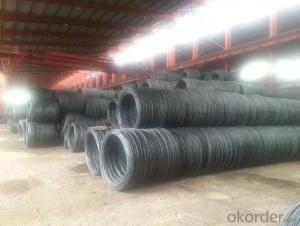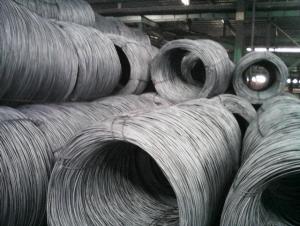Hot- rolled steel coil for construction GB Q235
- Loading Port:
- Tianjin
- Payment Terms:
- TT OR LC
- Min Order Qty:
- 25 m.t.
- Supply Capability:
- 100000 m.t./month
OKorder Service Pledge
OKorder Financial Service
You Might Also Like
Product Description:
One, introduction
Hot rolled coil is used for continuous casting slab or slab as raw material, after reheating furnace heating, scales entered the roughing mill in the high pressure water, roughing cut is expected by the head, tail, and then enter the finishing mill, the implementation of the computer controlled rolling, finally after rolling through the laminar cooling (computer controlled cooling rate) and coiling machine coiling, become straight hair volume. Hair straightener roll head, tail often forms a tongue shape and fishtail, thickness, width of poor accuracy, edge has wavy, folding, tower and other defects. The volume weight heavier, steel coil diameter is 760mm. (general pipe industry like use. )
2 two, characteristics
Because there is no after annealing treatment, the hardness is very high (HRB greater than 90), mechanical processing performance is poor, only a simplebending process has less than 90 degree directional (direction perpendicular to the rolled).
Three, use 3
Hot rolled products with high strength and good toughness, easy processing and good forming can be excellent performance of welding, which is widely used in ships, cars, bridges, buildings, machinery, boiler, pressure vesselmanufacturing industry.
The scope of application:
(1) after annealing processing into the common cold;
(2) processing galvanized galvanized unit before the annealing treatment;
(3) the basic do not need to process the panel.
4 four, classification
Carbon steel plate, carbon plate, low alloy plate, ship plate, bridge plate, boiler plate, container plate etc.. Rolling hard volumes: under normal temperature,the hot pickling volumes of continuous rolling.
Hot rolled steel strip products include steel (roll) and the shear of steel plate.And steel (coils) can be divided into straight and finishes volume (the volume,smooth rolling and slitting roll).
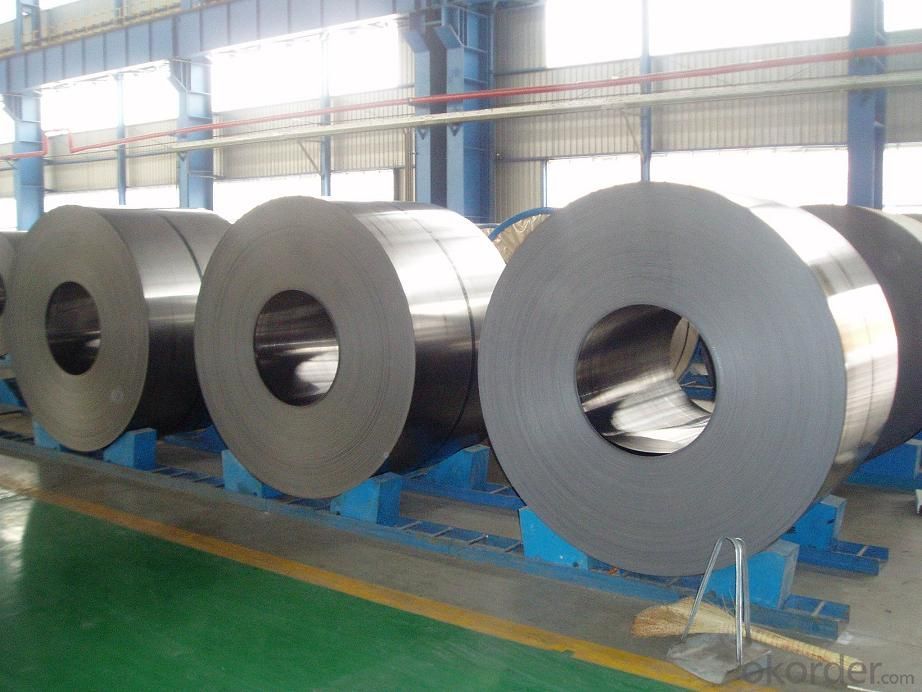
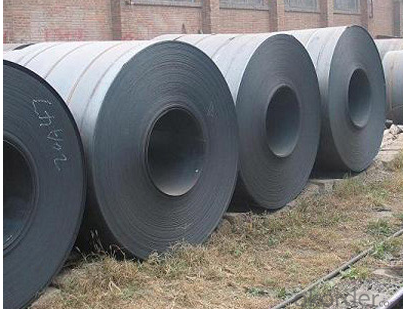
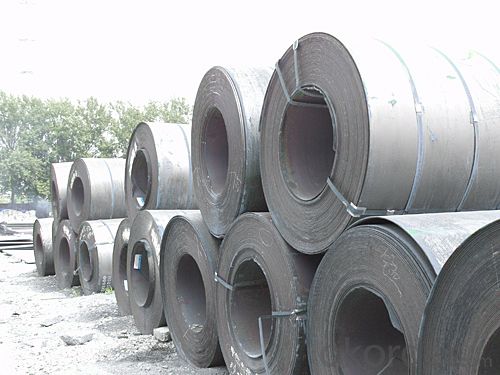
- Q: What are the common applications of alloy steel wire rod?
- Due to its unique properties and characteristics, alloy steel wire rod finds a wide range of applications. Some of the common uses of alloy steel wire rod include: 1. In the automotive industry, alloy steel wire rod is extensively utilized for producing various components like springs, suspension systems, wheel rims, and engine parts. Its high strength and durability enable it to withstand demanding conditions and loads experienced by these components. 2. The construction industry also heavily relies on alloy steel wire rod. It is employed in manufacturing reinforcing bars (rebars) necessary for strengthening concrete structures such as bridges, buildings, and highways. The high tensile strength and corrosion resistance of the wire rod ensure the longevity and structural integrity of these constructions. 3. Alloy steel wire rod finds applications in various manufacturing processes like welding, machining, and fabrication. It is commonly used for producing fasteners, wire mesh, wire ropes, and springs. The exceptional properties of alloy steel, including high tensile strength, good formability, and resistance to wear and fatigue, make it an ideal choice for these manufacturing applications. 4. In the aerospace industry, alloy steel wire rod is employed for producing components and parts that require high strength, excellent fatigue resistance, and the ability to withstand extreme temperatures. This includes aircraft landing gear, engine components, and structural parts. The superior mechanical properties of alloy steel wire rod make it suitable for withstanding the demanding conditions encountered in aerospace applications. 5. The energy industry also utilizes alloy steel wire rod for various purposes. It is used in manufacturing power transmission cables, electrical conductors, and wire mesh screens. The high electrical conductivity and corrosion resistance of alloy steel wire rod make it an ideal choice for these energy-related applications. In conclusion, due to its high strength, durability, formability, and resistance to wear, corrosion, and fatigue, alloy steel wire rod is commonly used in the automotive, construction, manufacturing, aerospace, and energy industries. Its versatility and unique properties make it an essential material for a wide range of applications.
- Q: What are the different cleanliness testing methods for steel wire rod?
- There are several cleanliness testing methods for steel wire rod, including visual inspection, magnetic particle inspection, ultrasonic testing, and chemical analysis. Visual inspection involves a thorough visual examination of the wire rod to check for any visible dirt, scale, rust, or other contaminants. Magnetic particle inspection uses magnetic fields and iron particles to detect surface and near-surface defects or contaminants. Ultrasonic testing utilizes high-frequency sound waves to detect internal defects or inclusions in the wire rod. Chemical analysis involves taking samples from the wire rod and analyzing them to determine the presence and concentration of various elements or compounds that could affect cleanliness. These testing methods are important to ensure the quality and cleanliness of steel wire rods for various applications.
- Q: Can steel wire rod be used in the production of automotive parts?
- Yes, steel wire rod can be used in the production of automotive parts. Steel wire rod is commonly used in the manufacturing of various automotive components due to its strength, durability, and versatility. It can be used to produce parts such as springs, cables, fasteners, reinforcements, and suspension components. Steel wire rod is known for its high tensile strength and excellent mechanical properties, making it an ideal material for automotive applications where strength and reliability are crucial. Additionally, steel wire rod can be easily formed and fabricated into different shapes and sizes, making it suitable for various automotive part production processes.
- Q: How is steel wire rod used in the manufacturing of wire for overhead power lines?
- Steel wire rod is a crucial component in the manufacturing of wire for overhead power lines. It serves as the primary raw material in the production process. The first step involves melting down steel scrap or iron ore in a furnace to create molten steel. This molten steel is then continuously cast into billets or blooms, which are essentially large rectangular or round bars. The next step is rolling these billets or blooms into steel wire rod. This process usually takes place in a wire rod mill, where the billets or blooms are heated and passed through a series of rollers that gradually reduce their size and shape them into long, thin rods. These steel wire rods are typically hot-rolled, which means they are formed while the steel is still at a high temperature. The hot-rolling process gives the wire rod its desired strength and flexibility, making it suitable for use in overhead power lines. Once the steel wire rod is produced, it undergoes further processing to transform it into wire for overhead power lines. This involves a series of drawing operations, where the wire rod is pulled through a series of dies to gradually reduce its diameter and increase its length. This drawing process ensures that the wire achieves the required dimensions and mechanical properties. After the wire has been drawn to the desired specification, it is usually subjected to heat treatment to enhance its strength and durability. This heat treatment process, known as annealing, involves heating the wire to a specific temperature and then cooling it slowly to relieve internal stresses and improve its metallurgical properties. Finally, the wire is coated with a layer of protective material, such as zinc, to prevent corrosion and extend its lifespan. This coating process, known as galvanization, involves immersing the wire in a molten zinc bath or using an electroplating method to apply a zinc layer onto its surface. Overall, steel wire rod plays a critical role in the manufacturing of wire for overhead power lines. It provides the necessary raw material for the production process and undergoes various stages of rolling, drawing, heat treatment, and coating to transform it into a high-quality wire that can withstand the demanding conditions of power transmission.
- Q: How is steel wire rod used in the production of wire mesh for industrial sieving?
- Steel wire rod is a crucial component in the production of wire mesh for industrial sieving. Wire mesh is commonly used in various industries, such as mining, construction, and agriculture, for the purpose of separating and classifying different materials based on their size and shape. The steel wire rod serves as the raw material for wire mesh production. It is first processed through a series of manufacturing steps to transform it into a suitable form for creating the mesh. The wire rod is typically drawn through a series of dies to reduce its diameter and increase its length. This process is known as wire drawing and results in a thin and elongated wire. Once the wire rod has been drawn, it is then woven or welded together to form the wire mesh. The weaving process involves interlacing the wires in a crisscross pattern, creating a strong and durable mesh structure. On the other hand, the welding process involves fusing the wires together at their intersections using heat or pressure, resulting in a solid and stable mesh. The choice between weaving and welding depends on the specific requirements of the application. Weaving is commonly used for producing wire mesh with smaller openings and finer mesh sizes, while welding is preferred for larger openings and heavier wire diameters. The wire mesh produced from steel wire rod offers several advantages for industrial sieving. Firstly, steel is a highly durable and robust material, capable of withstanding harsh environments and heavy loads. This ensures that the wire mesh can endure the constant impact of materials during the sieving process without losing its structural integrity. Additionally, steel wire rod provides excellent tensile strength, allowing the wire mesh to maintain its shape and resist deformation under tension. This is particularly important for applications that involve high-pressure sieving or require the mesh to be stretched tightly over a frame. Moreover, steel wire rod can be manufactured with different coatings or treatments to enhance its resistance to corrosion, abrasion, or other forms of wear and tear. This further extends the lifespan of the wire mesh, making it suitable for long-term industrial use. In summary, steel wire rod is an essential component in the production of wire mesh for industrial sieving. Its versatility, durability, and strength make it an ideal raw material for creating wire mesh that can withstand rigorous sieving applications in various industries.
- Q: What are the common shaping methods for steel wire rod?
- The common shaping methods for steel wire rod include drawing, rolling, and extrusion.
- Q: How is steel wire rod used in the production of wire displays?
- Steel wire rod is used in the production of wire displays as it serves as the foundation material for creating the wire frames and structures that make up the displays. The wire rod is first processed and shaped into the desired dimensions and then formed into different shapes and configurations to create the structures that hold and showcase products in wire displays.
- Q: How is steel wire rod used in the manufacturing of piano wires?
- Steel wire rod is used in the manufacturing of piano wires as it serves as the raw material for producing high-quality piano strings. The wire rod undergoes a series of processes such as drawing, annealing, and tempering to achieve the desired strength and elasticity required for piano strings. These strings are then used in the construction of pianos, ensuring that the instrument produces the desired sound quality and resonance.
- Q: What are the factors that affect the pricing of steel wire rod?
- There are several factors that can affect the pricing of steel wire rod. 1. Raw material costs: One of the main factors is the price of the raw materials used to produce steel wire rod. This includes the cost of iron ore, coal, and other minerals needed in the steelmaking process. Fluctuations in these raw material prices can directly impact the pricing of steel wire rod. 2. Demand and supply: The demand for steel wire rod plays a crucial role in determining its price. When demand is high, prices tend to increase, and when demand is low, prices may decrease. Similarly, the supply of steel wire rod, influenced by factors such as global production capacity, can impact its pricing. 3. Energy costs: Steel production requires a significant amount of energy. Therefore, fluctuations in energy prices, such as the cost of electricity and fuel, can affect the overall production costs of steel wire rod and subsequently its pricing. 4. Production and labor costs: The cost of producing steel wire rod is influenced by various factors, including labor costs, machinery maintenance, transportation, and overhead expenses. These costs can vary across different regions and countries, impacting the final pricing of the product. 5. Government regulations and trade policies: Government regulations, taxes, tariffs, and trade policies can have a significant impact on the pricing of steel wire rod. Trade barriers and import/export duties imposed by governments can affect the cost of importing or exporting steel wire rod, ultimately impacting its price in the market. 6. Market competition: The level of competition in the steel wire rod market can also affect its pricing. When there are many suppliers or alternatives available, prices may be more competitive. Conversely, if there is limited competition, prices may be higher. It is important to note that these factors are interconnected and can fluctuate over time. Therefore, the pricing of steel wire rod is highly dynamic and subject to various market forces and external influences.
- Q: What are the common bending methods for steel wire rod?
- The common bending methods for steel wire rod include manual bending using hand tools such as pliers or bending machines, hot bending which involves heating the wire to make it more malleable, and cold bending where the wire is bent at room temperature using mechanical force or specialized bending tools.
Send your message to us
Hot- rolled steel coil for construction GB Q235
- Loading Port:
- Tianjin
- Payment Terms:
- TT OR LC
- Min Order Qty:
- 25 m.t.
- Supply Capability:
- 100000 m.t./month
OKorder Service Pledge
OKorder Financial Service
Similar products
Hot products
Hot Searches
Related keywords
